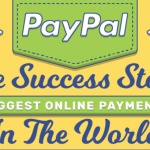We’ve all had a rainy day, things just don’t seem to want to go our way, no matter how hard we try. When cutting costs, a surprising amount of people opt for marketing to be among the first, if not the first on the chopping block. In reality, this is a very misguided decision. Marketing exists to move a selected product, whatever it may be, from the person offering it to the person interested in buying it. It makes people aware of the product or service being available and is a company’s best bet of getting a sale. There’s no point in having the best product in the world if no one is aware of its existence.
Do it right
First and foremost, marketing is a circle and it always will be. The core concept revolves around trying a strategy, seeing its results, modifying the approach based on previous experiences and pushing it out again. At the early stages, potential customers are studied for their various habits, interests, desires etc. After this, a marketing campaign based on this data is launched, specifically targeted at various core groups in a company’s user base, promoting what they want to see and making them aware of its availability. Then it just comes down to a simple case of rinse and repeat. See? A circle.
1. Show them what you got
Whatever your core groups are, whatever the product or service getting pushed is, people need to be made aware of all the options. Naturally, the figurehead of the company is going to receive the most attention, this does not mean that off shot products need to remain in its shadow. A joint marketing campaign would both cut costs and make potential customers aware that your company is more than a one-trick pony and has much more to offer. Who knows, your off-shot product or service might even end up becoming the next big thing, looking at you Craigslist.
2. Crunch the numbers

There’s a reason most companies thrive on customer feedback, both direct and indirect, it generates revenue. Simply put, a good advertising campaign is always followed up by valuable data on how each wave of ads performed, the conversion rate of interested users, what they liked, what they didn’t like, where they searched from, how they searched it…and the list goes on. All of this data can be sorted and provide a fairly detailed outline of what works and what doesn’t. This helps cut money from attempts that generated little to no response and helps boost successful strategies even further.
3. Say cheese
Another side of marketing is promotional material, this ranges from pamphlets to short videos. Despite most people’s opinion on those pesky autoplay videos on various sites, these videos can actually be an amazing asset to any company when implemented the right way. These videos could be tutorials and training videos on how to apply for a job, how to best organize yourself for the service needed. A good example of this is almost any online teaching school. With a large number of short tutorial videos, they promote their company while giving away useful information for anyone interested in their services. This eliminates the need for the acquisition of employees or even dedicated apartments, cutting costs immensely.
4. Make the website work for you
The beauty of having a website is its availability. With just the right amount of buzz, people become aware of your site and the many capabilities it has to offer. Having marketing point them to a webpage instead of your office doorstep works in two ways: Firstly, it takes a load off of your in-house staff and secondly, it allows for a more compact staff by automating some, if not the majority, of the processes. Just imagine services like Amazon or AliExpress functioning without a site and you’ll get the idea. The beautiful thing about site marketing is that it’s cheaper – doesn’t need specifics, that’s where the site comes in, get in touch with an SEO agency and you’ve pretty much got a guaranteed sale.
5. Reach out to colleagues

When looking to save money, it’s natural to fall into the safety net that is your colleagues. Think about it – when have we ever heard of marketing specifically targeting other people in the field? Yeah, me neither. However, libraries have been doing this for quite a while to boost business. The key idea here is cooperation inspired by information. By openly sharing resources and actively pushing to make others aware of what you have, you directly influence your own revenue by gaining something you need in return. A classic you scratch my back, I scratch yours scenario, and it works.
In conclusion
Marketing has been, is and always will be a powerful tool to keep any business afloat. A good marketing campaign can sell a bucket with the bottom cut off if the angle’s good enough. This is precisely why cutting costs in this department would be the equivalent of cutting off said bottom from the aforementioned bucket. The benefits of marketing are too large to ignore and, at the end of the day, your product may keep users coming back but marketing is what got them there in the first place.



